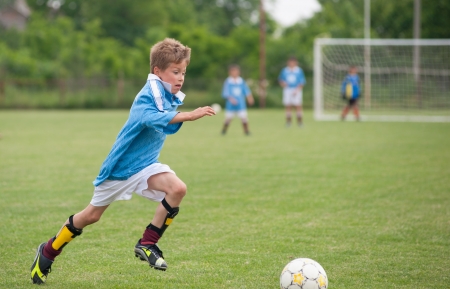
Summer is ending, and autumn is on the horizon. In our practice, we’ve noticed that during fall, there is an increase in foot and ankle injuries in young athletes. Taking part in soccer, football, tennis, volleyball, wrestling, cross country, and basketball increases the possibility of sustaining sprains, broken bones, and other injuries to the feet and ankles. Today, Dr. Eric Ricefield, Dr. Mark Yagodich, and Dr. Aliza V. Eisen of greater Philadelphia’s Your Next Step Foot and Ankle Care Center share a few tips to protect your children’s feet this fall.
- Buy the right shoe and size for the sport they’re participating in. Different sports require different footwear, so make sure your children are wearing the best shoe for that particular sport. If they prefer specific type of socks, be sure they wear them when trying on new shoes to ensure a proper fit. Ensure sufficient room in the toe box to prevent their toes from being smashed or injured while playing
- Make sure your children do warm-up exercises and stretches. Calf stretches and light jogging before beginning can warm up blood vessels, muscles, and ligaments. It helps diminish the risk of injuries.
- Have old injuries checked before the start of the season. Visiting a podiatrist for an exam before starting fall sports can help determine if your child’s formerly injured ankle or foot might be susceptible to sprains. If your podiatrist finds your child at risk of reinjuring themselves, have them wear a supportive ankle brace during their activities.
- Check the playing fields for holes, dips, and divots. A high percentage of sports-related injuries to the ankle is caused by jumping and running on irregular surfaces. Check the playing fields before practice or the game to identify any spots that might cause an injury.
- Stay hydrated and eat healthy foods. Be sure to provide a healthy diet and encourage your children to stay hydrated. Taking part in sports can cause dehydration and other issues.
- Have injuries treated right away. Don’t try to diagnose a problem yourself. Don’t just assume they have suffered a sprain. They may have injured other bones in the foot without knowing it. If they experience bruising or swelling, you should visit a podiatrist within 24 hours. The earlier the injury is evaluated and treated, the sooner issues like instability or arthritis can be prevented.
The team at greater Philadelphia’s Your Next Step Foot and Ankle Care Center wants to be your partner in keeping your children healthy throughout fall activities. Click here to locate the office nearest you and schedule an appointment today.
